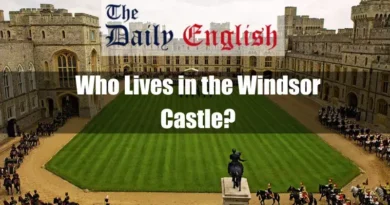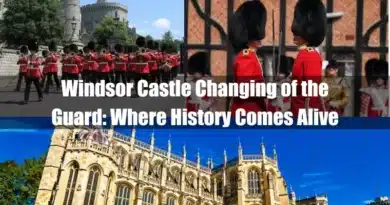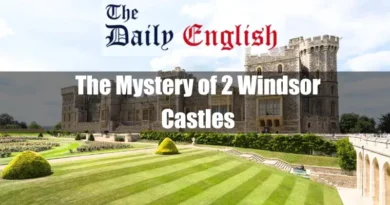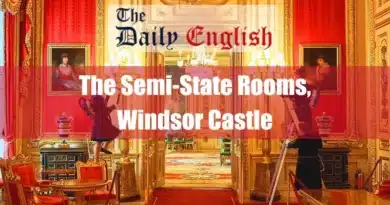No, no women are serving as Coldstream Guards at Windsor Castle. The regiment currently recruits only men, adhering to its tradition and historical portrayal. However, the broader British Army allows women to play all roles, including combat positions, as of 2016. The debate regarding the potential inclusion of women in the Coldstream Guards at Windsor Castle remains ongoing, with arguments on both sides.
I. Introduction
A. The Coldstream Guards: A Legacy of Protection
The Coldstream Guards, established in 1650 by Oliver Cromwell, are the oldest continuously serving standing army regiment in the British Commonwealth. They have played a crucial role in numerous significant events, from the English Civil War to the present day. Their presence at Windsor Castle, a royal residence for over 900 years, symbolizes their commitment to protecting the British sovereign.
Since 1660, the Coldstream Guards have proudly guarded the monarch at Windsor Castle. Their iconic scarlet uniforms and black bearskin hats are instantly recognizable, forming a tangible link between the past and present. Their duties at Windsor primarily involve ceremonial guarding and public engagement, ensuring the safety of the monarch and the castle itself.
B. A Shifting Landscape: Women in the British Military
The past few decades have witnessed a significant shift in the inclusion of women within the British military. Before 1914, women were largely excluded from serving in combat roles. However, with the outbreak of World War I, their contributions became critical. Women served in various support roles, including nurses, mechanics, and drivers, demonstrating their capabilities and unwavering commitment.
Following the war, women’s roles gradually expanded. In 1991, the government allowed women to serve on board Royal Navy ships, and in 2016, all combat roles were opened to women, marking a pivotal moment in the fight for gender equality within the armed forces. This progressive stance reflects the changing societal values in the UK and the recognition of women’s potential to excel in previously restricted domains.
II. The Traditional Role of the Coldstream Guards at Windsor Castle

A. Duties and Responsibilities: Beyond the Ceremony
The Coldstream Guards at Windsor Castle are not merely symbolic figures adorning the iconic red uniforms. They fulfil various crucial duties contributing to the royal residence’s overall security and smooth functioning. Here’s a closer look at their responsibilities:
- Guarding the Castle: This primary function involves ensuring the physical safety of the royal family and the castle itself. Guards are stationed at various designated points, performing patrols and controlling access.
- Changing of the Guard Ceremony: This elaborate public ceremony, held daily at Buckingham Palace and every other day at Windsor Castle, showcases the precision and discipline of the Coldstream Guards. It involves the formal handover of guard duties, accompanied by music and marching.
- Public Engagement: The guards interact with visitors, answering questions and providing information about the castle and its history. They also play a role in crowd control and ensuring the smooth flow of visitors through the grounds.
- State and Royal Occasions: During official ceremonies and visits by dignitaries, the Coldstream Guards provide an official presence, adding to the formality and prestige of the events.
Also, read:
- 10 Best Dog-Friendly Restaurants at Windsor
- Windsor Castle Opening Times: Everything You Need to Know.
- Windsor Castle Tickets: A Proven Comprehensive Guide.
- Windsor Castle Changing of the Guard: Where History Coming Alive.
B. The Iconic Image: Tradition and Historical Significance
The image of the male Coldstream Guard at Windsor Castle has become deeply ingrained in British culture and national identity. Their uniform, consisting of the scarlet tunic, black bearskin hat, and black trousers, has remained largely unchanged for centuries, serving as a tangible link to the regiment’s long and illustrious history.
This traditional image holds significant meaning:
- Symbol of Stability: The unchanging nature of the guard’s uniform and role reflects a sense of stability and continuity, especially within the ever-evolving world.
- Historical Accuracy: The uniforms and drills employed by the guards aim to maintain historical accuracy, offering a glimpse into the past and fostering a connection with British heritage.
- Public Recognition and Appeal: The iconic image of the Coldstream Guard serves as a recognizable symbol of the British monarchy and its traditions, captivating both domestic and international audiences.
However, this traditional image also sparks ongoing discussions about inclusivity and evolution.
Also, read:
- 10 Best Fish and Chips Near Windsor Castle
- Windsor Castle Tour: A Comprehensive and Best Guide.
- Windsor Castle Tickets Advantage Card: Know Everything.
III. The Inclusion of Women in the British Army: A Journey Towards Equality

While the image of the Coldstream Guards at Windsor Castle remains predominantly male, the landscape of the British Army regarding women’s participation has undergone a remarkable transformation over the past century. Let’s delve into the timeline of this ongoing evolution:
A. Timeline of Milestones:
- 1914-1918 (World War I): A pivotal era saw an influx of women into the war effort, taking on essential support roles like nurses, mechanics, and drivers. Notably, the Women’s Royal Naval Service (WRNS) was formed in 1917, marking the first official integration of women into the British military.
- 1938-1945 (World War II): The Auxiliary Territorial Service (ATS), established in 1938, played a crucial role, employing over 200,000 women in non-combat positions such as communications, logistics, and anti-aircraft operations.
- 1949: The ATS was disbanded, and the Women’s Royal Army Corps (WRAC) was formed, granting women official military status for the first time.
- 1991: A significant shift occurred as women were allowed to serve on Royal Navy ships, paving the way for further integration.
- 1998: The Royal Air Force opened combat aircraft roles for women pilots.
- 2016: A landmark decision lifted remaining restrictions, allowing women to serve in all combat roles across the British Army, including infantry, armoured units, and special forces.
B. Types of Roles Available:
With the removal of barriers, women can now contribute to a vast spectrum of roles within the British Army, categorized as follows:
- Combat Roles: These involve direct engagement in offensive and defensive operations, encompassing infantry, armoured corps, artillery, and engineering.
- Combat Support Roles: These support frontline troops, including logistics, communications, intelligence gathering, and medical services.
- Combat Service Support Roles: These roles are crucial for maintaining operational efficiency, encompassing catering, administration, and transport.
This expansion of opportunities reflects the British Army’s commitment to harnessing the full potential of its personnel, regardless of gender. However, the specific case of women in the Coldstream Guards at Windsor Castle requires further exploration, which will be discussed in the next part.
Also, read:
- How Far is Windsor Castle from Buckingham Palace? Royal Mile?
- How to Get to the Windsor Castle from London
- Who Lives in the Windsor Castle?
IV. The Specific Case of Women in the Coldstream Guards at Windsor Castle: Tradition vs. Inclusion

The question of whether women can serve as Coldstream Guards at Windsor Castle ignites a complex debate. While the winds of change have swept through the British Army, the iconic image of the all-male guard unit at the royal residence remains a contentious issue.
A. Official Stance and Current Situation:
The Coldstream Guards maintain a policy of recruiting only men. This aligns with the regiment’s traditional composition and the historical portrayal of the guard at Windsor Castle. However, it’s important to acknowledge that the broader British Army has embraced the inclusion of women in all roles, including combat positions, as of 2016.
B. Arguments for Inclusion:
Proponents of including women in the Coldstream Guards at Windsor Castle present compelling arguments:
1. Equality and Meritocracy:
They advocate for equal opportunities for women to serve in all roles within the Army, including traditionally male positions. They believe qualifications and merit, not gender, should determine eligibility.
2. Reflecting Societal Change:
They argue that the evolving societal landscape demands a more inclusive armed forces, reflecting the diverse composition of the country it represents.
3. Potential for Diversity and Strength:
They posit that incorporating women into the guard could bring new perspectives and skill sets, enriching the unit and fostering a more diverse and dynamic team.
Also, read:
- Are Babies Free for Windsor Castle
- Are Dogs Allowed into Windsor Castle
- Comparing Shops Near Windsor Castle
C. Arguments Against Inclusion:
Opponents of including women in the Coldstream Guards at Windsor Castle raise concerns:
1. Preserving Tradition and Historical Accuracy:
They emphasize the importance of upholding the regiment’s long-standing traditions and maintaining its historical portrayal, consistently featuring male guards.
2. Operational Effectiveness and Cohesion:
Some argue that the rigorous nature of the guard duties and the need for complete cohesion within the unit might be better served by maintaining the current all-male composition.
3. Public Perception and Tourist Appeal:
Concerns are raised about the potential impact on public perception and tourist appeal, given the deeply ingrained image of male guards at Windsor Castle.
Acknowledging that this debate is multifaceted, with valid arguments on both sides, is crucial. Ultimately, the decision regarding including women in the Coldstream Guards at Windsor Castle rests with the regiment’s leadership and relevant authorities.
Also, read:
- The Mystery of 2 Windsor Castles
- Are There Guided Tours of Windsor Castle
- Are There Mice in Windsor Castle
V. Current Situation and Future Possibilities: Navigating the Path Forward

The discussion surrounding women in the Coldstream Guards at Windsor Castle remains ongoing without a definitive answer. Let’s delve deeper into the current situation and explore potential future possibilities.
A. Have Any Women Served as Coldstream Guards at Windsor Castle?
No, to date, no women have served as Coldstream Guards at Windsor Castle. The regiment currently adheres to its policy of recruiting only men.
B. Potential Future Scenarios:
Predicting the future of this specific issue is challenging, as it involves balancing tradition, inclusivity, and evolving societal norms. However, we can explore some possible scenarios:
1. Maintaining the Status Quo:
The Coldstream Guards may choose to maintain their current policy, continuing to recruit only men based on their tradition and concerns regarding historical accuracy and operational effectiveness.
2. Gradual Inclusion:
The regiment could consider a phased approach, potentially allowing women to serve in non-ceremonial roles within the Windsor Castle detachment initially while still upholding the traditional image of ceremonial guard duties.
3. Full Inclusion:
In line with the broader trend of inclusivity within the British Army, the Coldstream Guards could ultimately decide to open eligibility to women for all roles, including the ceremonial guard duties at Windsor Castle.
It’s crucial to emphasize that any future decisions regarding this topic will likely involve careful consideration of various factors, including:
- Discussions with stakeholders: This would involve seeking input from the regiment’s leadership, government officials, and even the public through surveys or consultations.
- Evaluating operational feasibility: A thorough assessment of the potential impact on operational effectiveness, training requirements, and the overall cohesion of the unit would be essential.
- Addressing public perception: Understanding the potential impact on public perception and ensuring a smooth transition is crucial.
The future of the Coldstream Guards at Windsor Castle, particularly regarding potential female inclusion, remains to be seen. However, one thing is certain: the discourse surrounding this topic reflects the ongoing evolution of gender roles within the British military and society as a whole, demanding an ongoing critical analysis of tradition, inclusivity, and future potential.
Also, read:
- Are There Stables at Windsor Castle
- Are There Steps, Elevators or Lifts in Windsor Castle
- The Windsor Castle Fire 1992: A Historical Catastrophe.
VI. Conclusion: A Balancing Act between Tradition and Progress
The question of women serving as Coldstream Guards at Windsor Castle presents a complex conundrum. On the one hand, the regiment carries a rich tradition dating back centuries, symbolized by its iconic all-male guard presence. On the other hand, the British Army has embraced significant strides in inclusivity, allowing women to serve in all roles, including combat positions.
Key Points to Remember:
- The Coldstream Guards keep recruiting only men for all roles, including those at Windsor Castle.
- Proponents of inclusion argue for equality, reflecting societal changes, and valuing diversity.
- Opponents emphasize preserving tradition, valuing operational effectiveness and unit cohesion, and acknowledging potential public perception concerns.
- The future remains uncertain, with possibilities ranging from maintaining the status quo to gradual or full inclusion of women.
The ongoing conversation highlights the delicate balance between honouring tradition and embracing progressive values. Ultimately, any future decisions regarding this topic will likely involve a careful and nuanced approach, considering diverse perspectives, operational feasibility, and the evolving social landscape of the UK.
The story of women in the Coldstream Guards at Windsor Castle has yet to be written. It serves as a microcosm of the wider societal conversation around gender equality, tradition, and the evolving definitions of roles within institutions. As this conversation continues, it presents an opportunity for thoughtful reflection and critical analysis, paving the way for a future that balances respect for tradition with the pursuit of inclusivity and equal opportunities for all.
Also, read:
- State Apartments at Windsor Castle: An Ultimate Guide.
- St. George’s Chapel at Windsor Castle in History & Today.
- Queen Mary’s Dollhouse at Windsor Castle.
- Windsor Great Park: A Legacy of History, Nature, and Royal Heritage.
- Eton College Windsor: A Legacy of Excellence
- Frogmore House Windsor: A Royal Retreat Through Centuries
- The Long Walk, Windsor Castle Through Time
VII. FAQs about Women in the Coldstream Guards at Windsor Castle
1. What are the main duties and responsibilities of the Coldstream Guards at Windsor Castle?
The Coldstream Guards at Windsor Castle fulfil various crucial duties beyond ceremonial guarding. Their responsibilities include guarding the castle, participating in the Changing of the Guard ceremony, engaging with the public, and representing the regiment during state and royal occasions.
2. What is the significance of the iconic image of the Coldstream Guards at Windsor Castle?
The traditional image of the male Coldstream Guards, with their scarlet uniforms and black bearskin hats, holds significant historical and cultural meaning. It symbolizes stability and historical accuracy and is a recognizable symbol of British heritage and monarchy.
3. What is the timeline of milestones regarding the inclusion of women in the British military?
The timeline of milestones includes significant events such as World War I, when women began serving in support roles, the formation of the Women’s Royal Naval Service (WRNS) in 1917, and the opening of combat roles to women in 2016. These milestones reflect the gradual evolution towards gender equality within the British military.
4. What roles are available for women in the British Army following the removal of restrictions in 2016?
Women in the British Army can now contribute to a wide range of roles, including combat roles such as infantry and armoured units, combat support roles like logistics and intelligence gathering, and combat service support roles, including administration and transport.
5. Has any woman ever served as a Coldstream Guard at Windsor Castle?
No, to date, no woman has served as a Coldstream Guard at Windsor Castle. The regiment currently adheres to a policy of recruiting only men, maintaining its traditional composition.
6. What are some potential future scenarios regarding including women as Coldstream Guards at Windsor Castle?
Possible future scenarios include maintaining the current policy, considering a phased approach to inclusion, or fully opening eligibility to women for all roles within the Coldstream Guards. These scenarios would involve carefully considering factors such as tradition, operational feasibility, and societal norms.
7. Who ultimately decides whether women can serve as Coldstream Guards at Windsor Castle?
The decision regarding including women as Coldstream Guards at Windsor Castle rests with the regiment’s leadership and relevant authorities within the British Army. Any changes to policy would likely involve consultations and discussions with stakeholders.









